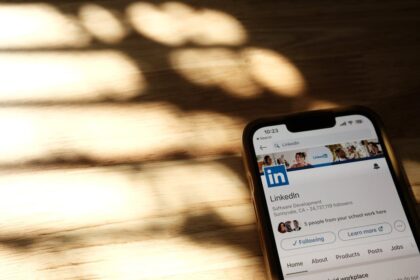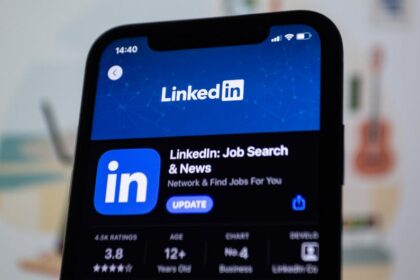Automating your LinkedIn ad campaigns stands as a pivotal strategy for modern B2B marketers, transcending mere convenience to become a fundamental driver of efficiency, optimization, and scalable growth. In the dynamic realm of professional networking and business advertising, manual management of campaigns quickly becomes untenable, especially when dealing with multiple initiatives, diverse target audiences, and fluctuating market conditions. The inherent complexity of LinkedIn’s targeting capabilities, combined with the nuances of its auction system, necessitates a systematic, automated approach to ensure consistent performance and maximal return on investment.
The core essence of LinkedIn ad automation revolves around leveraging technology to execute repetitive tasks, analyze vast datasets, and implement real-time adjustments that would otherwise demand significant human intervention. This shift liberates marketing teams from tedious operational duties, allowing them to redirect their expertise towards strategic planning, creative development, and high-level performance analysis. The advantages are multifaceted, ranging from significant time savings and reduced human error to enhanced agility in responding to market shifts and uncovering unforeseen opportunities. It’s about creating an intelligent, responsive ecosystem for your advertising efforts, ensuring that every dollar spent is optimized for impact.
The Indispensable Need for Automation in LinkedIn Advertising
LinkedIn’s advertising platform, while incredibly potent for B2B lead generation and brand building, also presents a unique set of challenges that automation effectively addresses. The precision targeting that LinkedIn offers – based on job title, industry, company size, skills, and professional groups – is a double-edged sword. While it allows for unparalleled audience specificity, it also demands meticulous management to avoid audience fatigue or over-segmentation. Moreover, the cost-per-click (CPC) and cost-per-thousand impressions (CPM) on LinkedIn can be higher than on consumer-focused platforms, making efficient budget allocation and continuous optimization absolutely critical.
Manual campaign management, particularly at scale, is inherently limited. Human analysts, no matter how skilled, cannot process and react to performance data with the speed and consistency of automated systems. Real-time bidding environments, shifting competitor landscapes, and dynamic audience behaviors require instantaneous adjustments that manual oversight simply cannot provide. For instance, an ad set might suddenly underperform due to increased competition, or a new creative variation might unexpectedly surge in performance. An automated system can detect these shifts within minutes and trigger pre-defined actions – such as pausing an inefficient ad, reallocating budget to a high-performer, or adjusting bids – long before a human can manually identify the trend and implement a change.
Furthermore, automation significantly mitigates the risk of human error. Typos in rules, incorrect budget entries, or missed opportunities to scale successful campaigns are common pitfalls in manual operations. Automated workflows, once correctly configured and thoroughly tested, execute tasks with unwavering precision, ensuring that strategic decisions are translated into flawless operational actions. This level of reliability is paramount for campaigns handling substantial budgets or requiring rapid iteration.
Scalability is another profound benefit. As your marketing efforts expand, the number of campaigns, ad sets, and individual ads multiplies. Attempting to manage this complexity manually becomes a bottleneck, hindering growth and limiting the scope of your advertising ambitions. Automation provides the infrastructure to effortlessly scale operations, allowing you to launch new campaigns, test more creatives, and target a broader array of audiences without a proportional increase in human resource allocation. It transforms the marketing team from an operational workforce into a strategic powerhouse, focused on innovation and long-term vision rather than day-to-day tactical execution.
Pillars of LinkedIn Ad Automation
To fully harness the power of automation, it’s essential to understand its foundational pillars. These interconnected areas collectively form a comprehensive strategy for optimizing LinkedIn ad campaigns from inception to ongoing management.
1. Automated Bidding Strategies:
Bidding is the lifeblood of any paid advertising campaign. On LinkedIn, like other platforms, it dictates how much you’re willing to pay for desired actions (clicks, impressions, conversions). Automated bidding strategies remove the guesswork and real-time micromanagement from this crucial aspect. LinkedIn’s native platform offers several automated options:
- Max Delivery: This strategy automatically adjusts your bid to get the most results possible within your budget. It’s ideal for campaigns focused on maximizing volume, such as awareness or lead generation where the cost per result is less of a strict constraint than overall volume.
- Target Cost: This strategy aims to deliver results at or around your specified target cost per key result (e.g., cost per lead, cost per conversion). LinkedIn’s algorithm automatically adjusts bids to stay close to this target, making it excellent for performance-focused campaigns where you have a clear CPA goal.
- While “Manual Bidding” exists, true automation in bidding comes from letting the platform’s algorithms, or sophisticated third-party tools, manage the real-time auction dynamics. These algorithms consider a multitude of factors – audience size, competition, historical performance, time of day, and more – to place the optimal bid for each impression or click opportunity.
- Beyond LinkedIn’s native options, advanced third-party ad management platforms offer algorithmic bidding that can transcend simple target costs. These systems can use machine learning to predict conversion rates, calculate real-time ROAS (Return on Ad Spend), and adjust bids dynamically to achieve specific business objectives across entire portfolios of campaigns, not just individual ones. They can incorporate external data points (e.g., CRM sales data) to make even more informed bidding decisions, optimizing for downstream revenue rather than just immediate conversions.
2. Automated Budget Management:
Effective budget management ensures your ad spend is allocated efficiently, preventing overspending on underperforming assets and ensuring sufficient investment in high-impact areas. Automated budget management moves beyond simply setting a daily or lifetime budget; it involves dynamic allocation and pacing.
- Dynamic Budget Allocation: This involves setting rules that automatically shift budget between campaigns, ad sets, or even individual ads based on predefined performance triggers. For example, if Campaign A consistently delivers leads at a 30% lower CPA than Campaign B, an automated rule can reallocate a percentage of Campaign B’s budget to Campaign A. This ensures capital is always flowing to the most efficient performers.
- Pacing Strategies: Automation can help maintain a steady spend rate throughout a campaign’s duration, preventing budget exhaustion too early or significant underspending. Rules can be set to incrementally increase or decrease daily budgets to hit a monthly target, or to pause campaigns if they are spending too quickly without generating commensurate results.
- Budget Ceiling and Floor Rules: Automated systems can prevent budgets from exceeding a certain threshold or falling below a minimum, ensuring financial control while allowing for dynamic adjustments. This is particularly useful for agencies managing multiple client budgets or large organizations with strict spending limits.
3. Automated Ad Creative & Copy Optimization:
The creative elements – headlines, ad copy, images, and videos – are paramount to ad performance. Automation revolutionizes the process of testing, identifying, and scaling winning creative variations.
- Dynamic Creative (LinkedIn Feature): LinkedIn’s Dynamic Creative feature allows you to upload multiple images, headlines, and descriptions, and the platform automatically combines and rotates them to find the best-performing permutations. This is a foundational level of creative automation, saving countless hours of manual A/B testing setup.
- Automated A/B Testing: Beyond Dynamic Creative, third-party tools or custom scripts can automate more complex A/B/n tests. They can automatically duplicate top-performing ads, create new variations based on historical success metrics, or pause underperforming creatives based on statistical significance. For instance, a rule could be: “If Ad Variant A’s CTR is 25% higher than Ad Variant B’s over 5,000 impressions, pause Ad Variant B and reallocate its spend to A.”
- Automated Ad Refreshing/Rotation: To combat ad fatigue (where audiences become desensitized to repeatedly shown ads), automation can be used to periodically refresh ad creatives. Rules can be set to automatically pause ads that have reached a certain impression count or have seen a significant decline in engagement rate, and then activate new, pre-uploaded creative variations.
- AI-Powered Copy Generation/Suggestion: Emerging AI tools can assist in generating ad copy variations based on performance data and best practices. While not fully autonomous for final deployment, these tools can provide automated suggestions, greatly accelerating the ideation and testing phase for copywriters.
4. Automated Targeting & Audience Management:
Precise targeting is LinkedIn’s greatest strength. Automation ensures your audiences remain relevant, refreshed, and optimally segmented.
- Audience Expansion/Narrowing Rules: As campaign performance evolves, automation can adjust audience parameters. If a highly specific audience segment shows exceptional results, rules can trigger an expansion to similar, slightly broader segments. Conversely, if a broad audience segment is underperforming, automation can narrow the targeting to focus on more responsive sub-segments.
- Lookalike Audience Automation: LinkedIn’s Lookalike Audiences are powerful for finding new prospects similar to your existing customers or website visitors. Automation can ensure these audiences are regularly refreshed or that new Lookalikes are automatically generated from updated source lists (e.g., new lead lists from your CRM).
- Retargeting List Automation: Automatically updating retargeting lists based on website visits, video views, or engagement with LinkedIn content ensures that your retargeting campaigns always target the most recent and engaged prospects. Integration with your CRM can also automate the creation of exclusion lists for converted customers, preventing wasted spend on individuals who have already completed the desired action.
- Exclusion List Automation: Beyond conversions, automation can automatically add individuals to exclusion lists if they repeatedly engage negatively with ads (e.g., hiding ads, reporting irrelevant content) or if they belong to segments you wish to suppress for specific campaigns.
- CRM Integration for Audience Sync: Deep integration with your Customer Relationship Management (CRM) system allows for automated syncing of customer and prospect data, enabling highly dynamic and precise Matched Audiences. As sales progress or customer statuses change in the CRM, these updates can automatically inform your LinkedIn audience segments, ensuring your ads are always relevant to the current stage of the buyer journey.
5. Automated Reporting & Analytics:
Data is only valuable if it’s actionable. Automation in reporting transforms raw data into digestible insights and immediate action triggers.
- Scheduled Reports: Instead of manually pulling data, automation allows for setting up scheduled reports to be delivered to stakeholders daily, weekly, or monthly. These can be customized to include specific metrics, dimensions, and visualizations relevant to each recipient.
- Custom Dashboards: While not strictly “automation,” many ad management platforms facilitate the creation of custom, real-time dashboards that automatically update with performance data, providing an always-on view of campaign health. These dashboards can be configured with conditional formatting to highlight areas needing attention.
- Alerts for Anomalies or Opportunities: This is where reporting truly becomes automated and actionable. Rules can be set to trigger alerts (via email, Slack, or other communication channels) when key performance indicators (KPIs) deviate significantly from norms. Examples include:
- “Alert: Campaign CPA has increased by 20% in the last 24 hours while spend remains high.”
- “Alert: Ad Set X has achieved 90% of its target conversions with 50% of the budget remaining – consider increasing budget.”
- “Alert: Daily budget for Campaign Y exhausted before noon – check pacing.”
- “Alert: Click-through rate (CTR) for ad creative Z has dropped below 0.5% for two consecutive days.”
- Integration with Business Intelligence (BI) Tools: For organizations with advanced analytical needs, automated data pipelines can feed LinkedIn ad performance data directly into BI tools like Tableau, Power BI, or Google Data Studio. This allows for cross-platform analysis, deeper custom visualizations, and the ability to correlate ad performance with broader business metrics.
6. Automated Campaign Pausing/Starting:
This pillar brings together performance insights and budget management into direct, decisive action.
- Performance-Based Rules: The most common form of automated pausing/starting involves setting rules based on performance thresholds. For instance, “If Ad Set X’s Cost Per Lead (CPL) exceeds $75 and it has spent over $500, then pause Ad Set X.” Conversely, “If Campaign Y’s Return on Ad Spend (ROAS) exceeds 3:1 for three consecutive days, then increase its daily budget by 15%.”
- Schedule-Based Rules: Automation can also be time-bound. For instance, pausing all B2B campaigns outside of business hours (e.g., 6 PM Friday to 9 AM Monday) if conversions are unlikely during those times, or activating specific holiday-themed campaigns only during relevant seasonal windows.
- Budget Depletion Rules: While LinkedIn’s platform handles basic budget pacing, automated rules can provide more granular control. For example, pausing an entire campaign if its lifetime budget is 90% depleted and there are still 5 days left in the month, signaling a need for review or additional budget allocation.
Leveraging LinkedIn’s Native Automation Features
Before diving into third-party solutions, it’s crucial to maximize the automation capabilities already built into LinkedIn’s Campaign Manager. These features, while foundational, provide a solid starting point for optimizing campaigns.
- Automated Bidding: As discussed, Max Delivery and Target Cost bidding strategies are primary examples of LinkedIn’s native automation. Max Delivery focuses on getting the most results for your budget, ideal for maximizing reach or initial lead volume. Target Cost aims to keep your cost per result close to a specified average, offering more control over efficiency. Understanding when to deploy each is key to leveraging this automation effectively. For brand awareness, Max Delivery might be suitable. For lead generation with strict CPA targets, Target Cost is often preferred.
- Dynamic Creative Ads: This feature is a powerful, native A/B testing automation tool. By uploading multiple ad components (images, videos, headlines, descriptions, call-to-action buttons), LinkedIn automatically combines them and delivers the best-performing variations to your audience. It constantly learns and optimizes, saving you the manual effort of setting up numerous individual A/B tests and analyzing their outcomes. It’s particularly effective for identifying winning creative combinations that resonate most with specific audience segments.
- Audience Attributes and Updates: While not fully “automation” in the rule-based sense, LinkedIn’s audience features facilitate continuous optimization. Matched Audiences (e.g., from uploaded lists, website retargeting, or video views) can be linked to external systems for automated updates (e.g., via CRM integration or pixel fires). Lookalike Audiences are algorithmically generated based on your seed audiences, providing an automated way to expand reach to similar profiles. The system continuously evaluates and updates these lookalike models, ensuring they remain relevant.
- Performance Insights and Recommendations: LinkedIn Campaign Manager provides automated insights and recommendations based on your campaign performance, budget, and targeting. These include suggestions for adjusting bids, expanding audiences, or allocating more budget to top-performing campaigns. While these are human-reviewed recommendations, they are generated by an automated analytical engine, pointing you towards potential optimizations without manual data crunching.
Third-Party Tools for Advanced LinkedIn Ad Automation
While LinkedIn’s native features are a great starting point, serious advertisers seeking high-level control, cross-platform integration, and hyper-optimization will inevitably turn to third-party ad management platforms and custom API integrations.
1. Ad Management Platforms (e.g., Smartly.io, Marin Software, Skai, Acquisio, Kenshoo):
These platforms are enterprise-grade solutions designed to manage vast and complex advertising portfolios across multiple channels, including LinkedIn. They offer a level of automation far exceeding native capabilities:
- Advanced Rule Creation: These platforms provide highly granular “if/then/else” rule engines. You can create complex conditional rules based on virtually any performance metric (e.g., CPA, CPL, ROAS, CTR, conversion rate, impression share), budget consumption, time of day, audience segments, and more. Rules can be chained together or nested for sophisticated automation.
- Algorithmic Bidding: Beyond LinkedIn’s basic automated bids, these platforms deploy proprietary machine learning algorithms that can predict performance, optimize bids in real-time for specific ROAS or CPA targets, and manage bids across entire campaign portfolios to ensure holistic optimization towards business goals. They can often bid at a more granular level than LinkedIn’s native tools, such as at the individual ad level, or adjust bids based on predicted conversion values from your CRM.
- Cross-Platform Capabilities: A significant advantage is the ability to manage and automate campaigns across LinkedIn, Facebook, Google Ads, programmatic platforms, and more from a single interface. This allows for unified budget allocation, cross-channel attribution, and holistic reporting, enabling truly integrated marketing automation.
- Budget Optimization Across Portfolios: These tools can dynamically reallocate budgets not just within a single campaign, but across an entire set of campaigns or even different ad platforms, ensuring that your total ad spend is always directed towards the highest-performing opportunities across your entire digital marketing ecosystem.
- Creative Management and Testing: Many platforms offer advanced creative management suites, including automated dynamic creative generation (beyond LinkedIn’s native offering), scaled A/B testing, and AI-powered recommendations for creative optimization. Some can even identify winning creative elements (e.g., specific images, keywords) and automatically generate new ad variations incorporating those elements.
2. Integrations & APIs:
The true power of automation often lies in connecting LinkedIn’s data and actions with other critical business systems.
- LinkedIn Marketing API Capabilities: For highly customized automation needs, direct interaction with the LinkedIn Marketing API is invaluable. This allows developers to build bespoke tools for:
- Automated campaign creation and modification (e.g., launching new campaigns triggered by product launches in a separate system).
- Programmatic reporting and data extraction for custom dashboards.
- Advanced audience management (e.g., syncing dynamic customer segments from a data warehouse).
- Real-time bid adjustments based on external market data or internal sales data.
- CRM Integration (Salesforce, HubSpot, Zoho CRM): Connecting your CRM to LinkedIn ads allows for:
- Automated Matched Audiences: Syncing customer lists (e.g., existing customers for exclusion, high-value leads for specific nurturing campaigns) directly from your CRM. As CRM data updates, LinkedIn audiences automatically update.
- Offline Conversion Tracking: Sending conversion data (e.g., closed deals, qualified leads) from your CRM back to LinkedIn, providing a more accurate picture of ad ROI and allowing LinkedIn’s algorithms (and your automation rules) to optimize for true business outcomes, not just immediate form fills.
- Lead Syncing: Automating the transfer of leads captured via LinkedIn Lead Gen Forms directly into your CRM, enabling immediate follow-up by sales teams and streamlined lead nurturing workflows.
- DMPs (Data Management Platforms): DMPs consolidate data from various sources to create rich, unified customer profiles. Integrating a DMP with LinkedIn allows for:
- Richer Audience Segmentation: Leveraging comprehensive first- and third-party data within your DMP to create highly precise and dynamic LinkedIn audience segments.
- Automated Audience Activation: Activating specific audience segments on LinkedIn based on their behaviors or attributes defined within the DMP.
- Business Intelligence Tools (Tableau, Power BI, Google Data Studio): These tools facilitate advanced data visualization and analysis. Automated connectors or API feeds can push LinkedIn ad data into these platforms, allowing marketers to:
- Build custom, interactive dashboards that refresh automatically.
- Combine LinkedIn data with sales, website, and other marketing data for holistic performance analysis.
- Identify trends and anomalies more effectively, informing strategic adjustments.
- Marketing Automation Platforms (Marketo, Pardot, Eloqua): Integrating LinkedIn ads with these platforms enables a seamless lead journey:
- Automated Nurturing: Leads captured via LinkedIn can automatically be enrolled in specific nurturing sequences within the marketing automation platform.
- Content Personalization: Insights from LinkedIn ad engagement can inform content personalization within email campaigns or on landing pages.
- Attribution Tracking: Connecting ad spend to downstream marketing and sales activities for more comprehensive attribution modeling.
Setting Up Automation Rules: Best Practices and Examples
The effectiveness of automation hinges on the quality and intelligence of the rules you establish. Poorly configured rules can lead to wasted spend or missed opportunities.
Rule Types:
- Performance-based Rules: Triggered by changes in key metrics (e.g., CPA, CTR, conversion rate, ROAS). This is the most common and powerful type.
- Schedule-based Rules: Triggered at specific times or intervals (e.g., daily, weekly, monthly, specific dates).
- Budget-based Rules: Triggered by budget consumption or remaining budget.
Key Metrics for Automation:
When defining rules, focus on metrics directly tied to your campaign objectives:
- Cost Per Acquisition (CPA) / Cost Per Lead (CPL): Essential for lead generation and conversion campaigns.
- Click-Through Rate (CTR): Indicates ad relevance and engagement.
- Conversion Rate: Percentage of clicks that lead to a desired action.
- Return on Ad Spend (ROAS): Crucial for revenue-generating campaigns.
- Impression Share: Indicates your visibility within your target audience.
- Budget Spent / Remaining Budget: For pacing and ensuring budget efficiency.
Practical Examples of Automation Rules:
-
Pausing Underperforming Ad Sets:
- Rule: “IF Ad Set X’s CPL > $100 AND Ad Set X’s Spend > $500 THEN PAUSE Ad Set X.”
- Benefit: Prevents continued spending on ad sets that are not meeting efficiency targets, freeing up budget for better performers. This rule includes a spend threshold to ensure statistically significant data before pausing.
-
Increasing Budget for High-Performing Campaigns:
- Rule: “IF Campaign Y’s ROAS > 3.0 AND Campaign Y’s Daily Budget Utilization > 90% (meaning it’s spending all its budget) THEN INCREASE Campaign Y’s Daily Budget by 20% (up to a max of $500/day).”
- Benefit: Automatically scales successful campaigns, capitalizing on proven ROI. The budget utilization condition ensures you’re only increasing budget when the current budget is being fully exploited.
-
Adjusting Bids Based on CPA Targets:
- Rule: “IF Ad Set Z’s CPA > Target CPA ($75) AND Ad Set Z’s Impressions > 10,000 THEN DECREASE Ad Set Z’s Bid by 10%.”
- Rule: “IF Ad Set Z’s CPA < Target CPA ($50) AND Ad Set Z’s Conversions > 20 THEN INCREASE Ad Set Z’s Bid by 5%.”
- Benefit: Maintains bid efficiency, ensuring you don’t overpay or under-bid for conversions. The impression/conversion thresholds ensure sufficient data for informed decisions.
-
Rotating Ad Creatives to Combat Fatigue:
- Rule: “IF Ad Creative A’s Impressions > 20,000 AND Ad Creative A’s CTR < 0.8% THEN PAUSE Ad Creative A AND ACTIVATE Ad Creative B (a new variation).”
- Benefit: Keeps your ads fresh and relevant to your audience, preventing performance decay due to ad fatigue. Requires pre-uploaded alternative creatives.
-
Notifying Team Members of Significant Performance Shifts:
- Rule: “IF Total Account Spend increases by >30% compared to the previous day OR IF Total Account CPL increases by >15% compared to the 7-day average THEN SEND EMAIL ALERT to [marketing_manager@yourcompany.com].”
- Benefit: Provides proactive alerts, allowing for swift human intervention when automated rules might not suffice, or to simply keep stakeholders informed.
-
Schedule-Based Campaign Management:
- Rule: “EVERY FRIDAY at 5 PM PST, PAUSE all ‘Lead Gen’ campaigns. EVERY MONDAY at 8 AM PST, ACTIVATE all ‘Lead Gen’ campaigns.”
- Benefit: Ideal for B2B campaigns where leads are unlikely to convert outside business hours, saving weekend spend.
Best Practices for Rule Setup:
- Start Small and Simple: Don’t automate everything at once. Begin with a few straightforward rules and expand as you gain confidence and understanding.
- Define Clear Thresholds: Ensure your performance metrics and numerical thresholds are precise and aligned with your business goals.
- Include Data Volume Thresholds: Always include conditions like “AND Impressions > X” or “AND Conversions > Y” before triggering actions. This prevents rules from reacting to statistically insignificant fluctuations.
- Monitor Automation Regularly: Automation is not “set it and forget it.” Periodically review rule performance, audit logs, and ensure that automated actions are indeed leading to desired outcomes.
- Consider Rule Conflicts: If you have multiple rules, ensure they don’t contradict each other. For example, one rule increasing a bid and another decreasing it simultaneously could lead to a bidding war against yourself. Prioritize rules or set conditions to prevent overlaps.
- Use Naming Conventions: Implement consistent naming conventions for campaigns, ad sets, and ads. This makes it much easier to apply rules across relevant assets.
- Test in a Controlled Environment: If possible, test complex automation rules on a small scale or in a sandbox environment before full deployment.
- Layer Rules: Combine multiple conditions to create more intelligent rules. For example, “IF CPL is high AND CTR is low THEN PAUSE Ad.” This ensures decisions are based on a confluence of factors.
Advanced Automation Strategies
Beyond the core pillars, several advanced strategies elevate LinkedIn ad automation to a truly sophisticated level, often requiring a deeper integration of data science and external systems.
1. Predictive Analytics & AI in Automation:
The next frontier for ad automation involves predictive modeling. Instead of reacting to past performance, AI-driven systems can forecast future trends and proactively adjust campaigns.
- Forecasting Performance: AI models can analyze historical data, market trends, seasonality, and competitive activity to predict future CPA, conversion rates, or ROAS.
- Proactive Adjustments: Based on these predictions, automation can pre-emptively adjust bids, budgets, or targeting. For instance, if an AI predicts a surge in lead quality from a specific audience segment next week, automation could preemptively increase bids and budget for that segment.
- Machine Learning for Hyper-Optimization: ML algorithms can continuously learn from campaign performance, refining their bidding strategies and rule triggers without explicit human programming. They can identify complex patterns that lead to conversions (e.g., a specific combination of job title, company size, and ad creative) and automatically optimize campaigns towards those high-value segments.
2. Cross-Channel Automation:
For businesses advertising on multiple platforms, true automation extends beyond LinkedIn.
- Unified Budget Allocation: Automated systems can dynamically shift budget not only between LinkedIn campaigns but also between LinkedIn, Google Ads, Facebook Ads, etc., optimizing overall marketing spend based on real-time ROAS or CPA targets across all channels.
- Orchestrated User Journeys: Automation can ensure that a user who engages with a LinkedIn ad is then served a complementary ad on Google Display Network or receives a specific email sequence, creating a cohesive, multi-touchpoint user journey.
- Holistic Reporting & Attribution: Consolidating data from all platforms into a single analytics environment (often a BI tool) allows for automated, multi-touch attribution models. This ensures that automated budget and bid decisions are informed by the full customer journey, not just LinkedIn’s last-click attribution.
3. Dynamic Landing Page Optimization:
While more complex, automating the relevance between an ad and its landing page can significantly boost conversion rates.
- Content Personalization: Advanced integrations can dynamically alter landing page content (headlines, testimonials, product images) based on the specific LinkedIn ad that drove the click, the user’s LinkedIn profile data, or their identified segment.
- A/B Testing of Landing Page Variations: Automation can manage and analyze A/B tests on landing pages, automatically directing traffic to the winning variations or identifying elements that consistently perform well.
4. Automated Content Generation (Emerging):
Though still nascent, the application of AI to generate ad copy and even some basic visual elements is an area of rapid development.
- AI-Driven Copywriting: Tools leveraging large language models can automatically generate multiple ad copy variations, headlines, and descriptions based on inputs like product features, target audience, and desired tone. While human review is still critical, this dramatically speeds up the creative iteration process.
- Automated Image/Video Selection: AI can analyze the content of images/videos and recommend the best fit for specific ad copy or audience segments, or even generate simple graphic variations based on templates.
Challenges and Considerations in LinkedIn Ad Automation
While the benefits are compelling, implementing and managing LinkedIn ad automation comes with its own set of challenges that require careful consideration.
1. Data Accuracy and Integrity (GIGO – Garbage In, Garbage Out):
The effectiveness of any automated system is directly dependent on the quality of the data it processes. If your conversion tracking is inaccurate, your CRM data is messy, or your campaign tagging is inconsistent, automated rules will make suboptimal or even detrimental decisions. Ensuring clean, accurate, and consistent data inputs is foundational. This includes proper LinkedIn Insight Tag implementation, consistent UTM parameter usage, and meticulous tracking of offline conversions.
2. Platform Limitations and API Constraints:
While LinkedIn’s Marketing API is robust, it doesn’t always offer real-time access to every single metric or feature available in the Campaign Manager UI. Third-party tools are also bound by the API’s capabilities. There might be a slight delay in data freshness, or certain actions might not be automatable directly through the API, requiring workarounds or manual intervention. Understanding these limitations is crucial when designing your automation strategy.
3. Complexity of Rules and Unintended Consequences:
As you build more complex, layered automation rules, the potential for unintended consequences increases. A rule designed to optimize one metric might inadvertently negatively impact another. Conflicting rules (e.g., one rule increasing bids while another simultaneously decreases them for the same ad set) can lead to erratic performance. Thorough testing, careful monitoring, and a phased rollout of new rules are essential to mitigate these risks. It’s often better to start with simpler rules and gradually add complexity.
4. Monitoring Requirements (Automation is Not “Set and Forget”):
Perhaps the biggest misconception about automation is that it eliminates the need for human oversight. This is false. Automation handles repetitive tasks and real-time adjustments, but it doesn’t replace strategic thinking, creative insight, or the ability to react to unforeseen external factors (e.g., a global economic downturn, a major competitor’s new campaign). Automated systems require regular monitoring to ensure they are functioning as intended, that rules are still relevant, and that overall campaign performance aligns with broader business objectives. Alerts and anomaly detection systems become even more critical in an automated environment.
5. Learning Curve and Expertise:
Implementing advanced automation often requires a significant learning curve. Understanding the intricacies of LinkedIn’s ad platform, mastering third-party tool interfaces, comprehending API documentation, and developing a strategic approach to rule creation demands specialized knowledge and experience. Investing in training for your team or partnering with agencies proficient in ad automation can be a necessary step.
6. Budget Considerations for Third-Party Tools:
High-end ad management platforms and custom API integrations typically come with a substantial cost, often tiered based on ad spend. For smaller businesses or those with limited ad budgets, the ROI of these sophisticated tools might not be immediately apparent. It’s crucial to conduct a thorough cost-benefit analysis before investing, weighing the potential efficiency gains and performance improvements against the subscription fees. Starting with LinkedIn’s native automation and gradually escalating to third-party tools as your ad spend and complexity grow is a common and prudent approach.
7. Privacy Concerns and Data Governance:
With increased data integration comes heightened responsibility for data privacy and compliance (e.g., GDPR, CCPA). Automating audience syncing, offline conversion tracking, and data sharing between LinkedIn, your CRM, and other platforms requires robust data governance policies. Ensuring that all data collection, processing, and sharing practices adhere to relevant privacy regulations is paramount to avoid legal repercussions and maintain audience trust.
Future Trends in LinkedIn Ad Automation
The landscape of digital advertising is constantly evolving, and LinkedIn ad automation is poised for significant advancements.
- Enhanced AI and ML Capabilities: Expect more sophisticated machine learning models to be integrated directly into LinkedIn’s platform and third-party tools. These models will move beyond simple rule-based automation to truly predictive and prescriptive optimization, dynamically forecasting campaign outcomes and making proactive adjustments before issues arise. This includes AI-driven audience discovery and segmentation, identifying new high-value professional groups based on subtle behavioral patterns.
- Deeper First-Party Data Utilization: As privacy regulations tighten, the reliance on first-party data (your own customer and prospect data) will increase. Automation will play a crucial role in activating this data on LinkedIn at scale, enabling hyper-personalized ad experiences based on granular insights from your CRM, website, and other owned properties. This includes real-time syncing of customer lifecycle stages to serve highly relevant ads.
- Greater Personalization at Scale: The goal is to deliver a 1:1 advertising experience without manual effort. Automation will facilitate the dynamic assembly of ad creatives (images, videos, copy) and landing pages that are uniquely tailored to each individual or micro-segment’s professional profile, interests, and journey stage, all managed by intelligent algorithms.
- Predictive Audience Behavior: AI models will become adept at predicting not just what an audience segment has done, but what they are likely to do. This means identifying professionals on the verge of making a purchase decision or those exhibiting intent signals, and automatically activating targeted campaigns to engage them at the optimal moment.
- Automated Content Generation Refinement: AI’s ability to generate compelling ad copy and even some visual assets will continue to improve. This will empower marketers to test a much broader range of creative variations at speed, with automation handling the generation, deployment, and performance analysis, leading to more effective and less resource-intensive creative development cycles.
- Voice-Activated Campaign Management (Speculative but Interesting): While still a distant prospect, the integration of voice interfaces for basic campaign queries or even simple adjustments could emerge, offering a hands-free way to interact with automated systems. “Hey, [tool name], how is my top LinkedIn lead gen campaign performing today?” or “Increase budget for the best performing ad set in my Q3 awareness campaign.”
- Blockchain for Transparency and Attribution: While still largely conceptual for mainstream ad platforms, blockchain technology could eventually offer unprecedented transparency in ad delivery and attribution, and automated systems could leverage this verifiable data for even more trustworthy optimization.
In conclusion, automating your LinkedIn ad campaigns is no longer an optional luxury but a strategic imperative for any serious B2B marketer. It provides the necessary infrastructure to navigate the complexities of the platform, scale operations efficiently, and extract maximum value from every ad dollar. By embracing automated bidding, budget management, creative optimization, audience targeting, and reporting, marketers can transform their LinkedIn advertising efforts from a labor-intensive chore into a dynamic, intelligent, and perpetually optimizing growth engine. The journey to full automation is iterative, requiring careful planning, continuous monitoring, and a commitment to leveraging technology for superior performance and strategic advantage.










